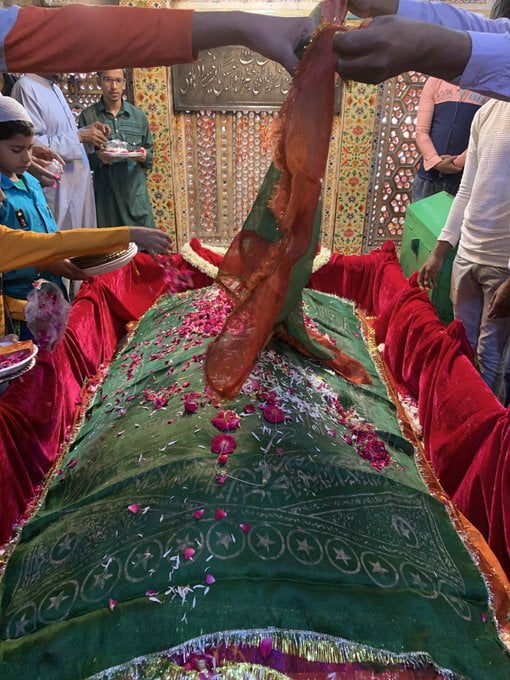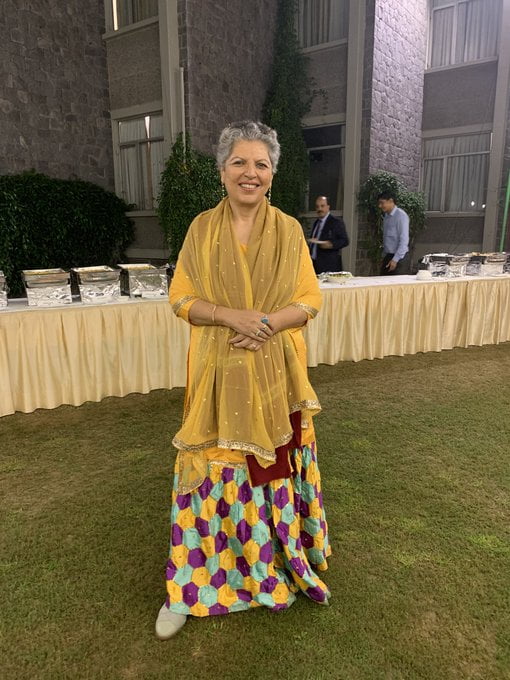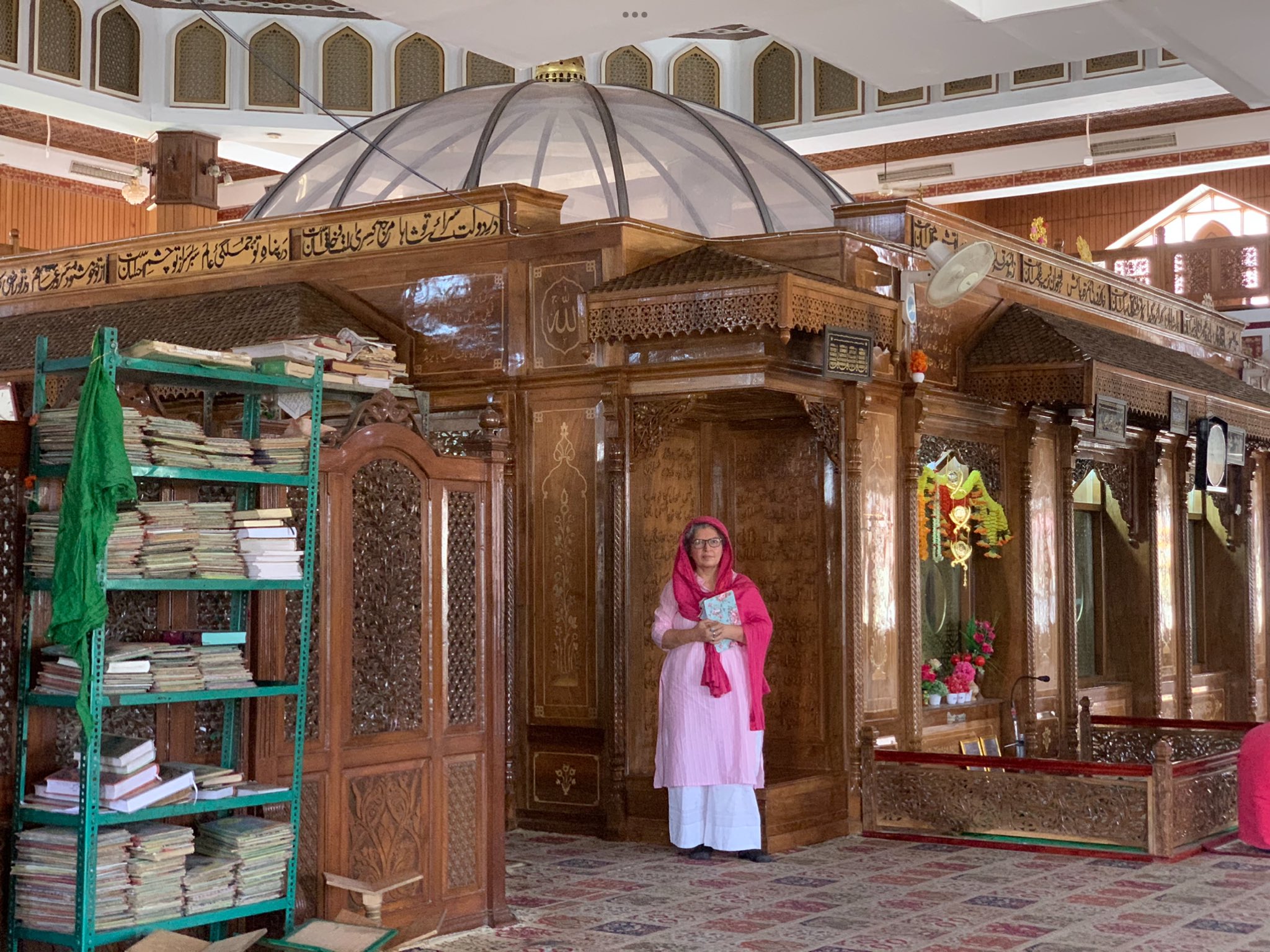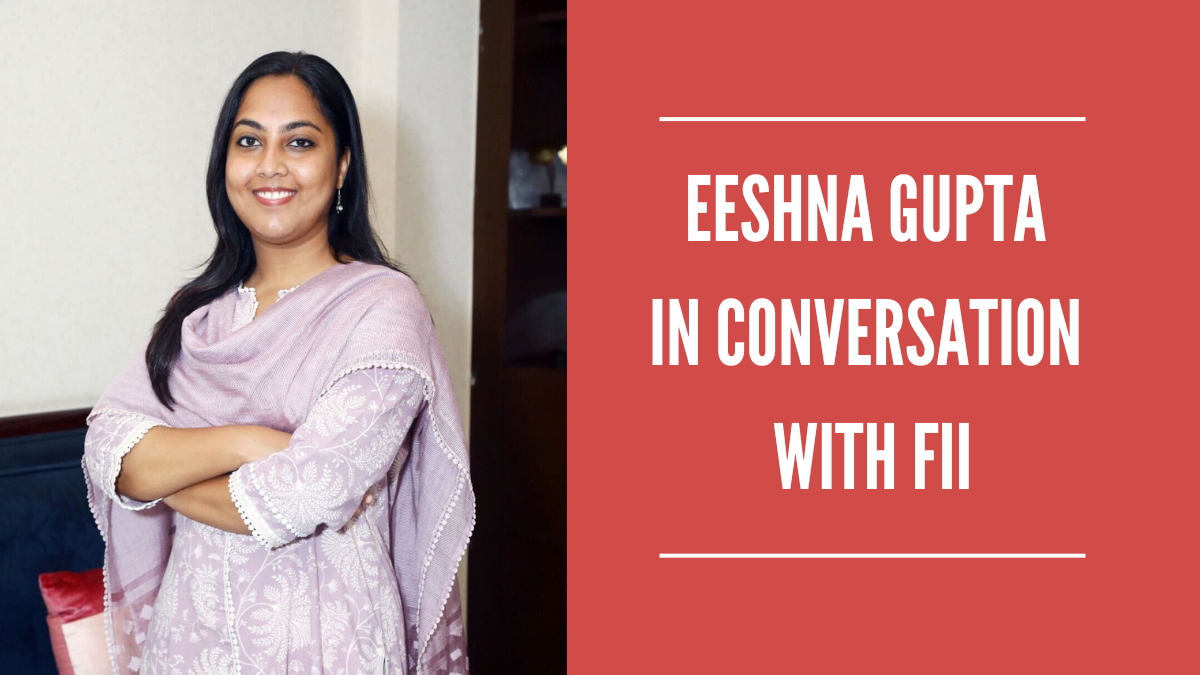Rana Safvi is a renowned historian, author, translator and blogger. She documents her passion for India’s Ganga Jamuni Tehzeeb through its food, customs, festivals, and monuments. She received her master’s degree in medieval history from the prestigious Aligarh Muslim University.
Rana was 58 when her first book, ‘Where Stones Speak: Historical Trails in Mehrauli, the First City of Delhi’, was launched, which is a best seller.
She is the author of several books, including:
- The Forgotten Cities of Delhi
- Tales from the Quran and Hadith
- Shahjahanabad: The Living City of Old Delhi
- A Saint, A Folk Tale and Other Stories: Lesser-known monuments of India
- In Search of the Divine: Living Histories of Sufism in India
Rana Safvi has translated Sir Syed Ahmad Khan’s seminal book on Delhi- ‘Asar us Sanadid’ into English, ‘Dastan-e-Ghadar‘ and four (19th and 20th-century) accounts of Delhi in the book ‘City of my Heart.’
A firm believer of the Ganga Jamuni Tehzeeb, she is passionate about gaining and sharing knowledge, and these days, she accomplishes these goals through social media platforms.
“I found many books recounting a shared past, a harmonious past and some very interesting and often poignant and tragic accounts. I knew I wanted to translate them. My translations are those accounts which describe the history of that period. It is needed to shed light on Delhi and parts of India that existed in the 19th century and later under British colonial rule, as seen in contemporary or near contemporary discourse.”
Rana Safvi
Her blog, ranasafvi.com, serves as a repository for her articles in every aspect of Indian culture, including its cuisine, history, and old-age tradition. She is also the founder and moderator of the popular trend #shair on Twitter, which aims to revive widespread interest in Urdu poetry. Her blog ‘Hazrat-e-Dilli’ aims to enrich the younger generation about how incredible India is.
Rana Safvi talks about the glorious history of Old Delhi and Ganga Jamuni Tehzeeb to FII.
Q: What inspired you to start writing and documenting history, particularly of Delhi, and how has your writing evolved over the years?
A. In 2012/13 I went for some heritage walks and fell in love with the lesser known heritage monuments of Delhi. I also realised that very little had been written about them after independence.
I decided to write about them. Initially it was supposed to be one book but it stretched to 3 books #DelhiTrilogy . Over the years the craft of writing has evolved and I have tried to incorporate all feedback/critiques that I have received.
Also read: Safia Akhtar: An Underrated Genius And Connoisseur Of Urdu Literature
Q: You are a firm believer of the Ganga Jamuni Tehzeeb which you document through your writings, blogs, podcasts and videos. Will you elaborate on its necessity at this period of time?
“The idea of multi-communitarianism has been derived from the composite, syncretic civilisational legacy of India, which is a product of centuries of interaction, exchange and accommodation between Hindu, Muslim, Buddhist, Jain, Sikh and Christian traditions. Despite the tragic partition of the Indian subcontinent along religious lines and the current atmosphere of communal polarisation and mistrust, this composite legacy remains an inseparable part of Indian society,“ says sociologist T K Oommen. At this time it is necessary to remind ourselves of that unity in diversity and overcome the hate and bigotry which is spewing on social media and through whatsapp’s forwards into our homes and life.
Q: In addition to being a renowned historian, you are a popular translator and have translated several enormous works. Will you elaborate on the significance of translating older works at this period of time?
While writing about Delhi, I researched Urdu literature of the 19th century and early 20th century. I found many books recounting a shared past, a harmonious past and some very interesting and often poignant and tragic accounts. I knew I wanted to translate them.

My translations are those accounts which describe the history of that period. It is needed to shed light on Delhi and parts of India that existed in the 19th century and later under British colonial rule, as seen in contemporary or near contemporary discourse.
Also read: Maha Laqa Chanda: The First Female Published Urdu Poet Of The Indian Subcontinent
Q: Multiculturalism is the facilitation to preserve each one’s distinctiveness, to preserve people who belong to different cultures and to ensure equality. How can we connect multiculturalism through our history?
Indian secularism does not conform to the Western definition but implies respect for all religions, celebration of religious toleration and equality for all religions. It is a composite culture, with continual reciprocity and mutual sharing. There are many overlapping cultural practices; and shared values and belief systems.

Q: The #shair trend on Twitter has significantly revived public interest in Urdu poetry. Do you believe that this initiative will help in preserving the Urdu language?
Yes, I do believe that when I started this forum in 2011, it started an interest in Urdu poetry and then Urdu itself. Now of course there are many such initiatives, but #shair remains a pioneer on social media.
Q: In the article “The Forgotten Women of 1857,” you reflected on the absence of women who participated in the war of 1857. Express your views on how the historical accounts of women would impact women living in the present.
From the beginning of history, women were equal participants in labour and life, yet their stories are rarely found. Historians of feminist history are now using primary sources to describe their role and influence.
Also read: Rekhti: The Lost Genre Of Urdu Feminist Poetry
One such book is Prof Ruby Lal’s Domesticity and Power in Early Mughal India: Historicizing the Haram, where she in a pioneering attempt uses Gulbadan Begum’s account of her brother Humayun’s reign to glean important facets of the life of Mughal women and the power they wielded.
Mutiny in the Margins series does document a few women of 1857, but much more is needed. This is just a start, and here’s hoping for a greater focus on historical research.




